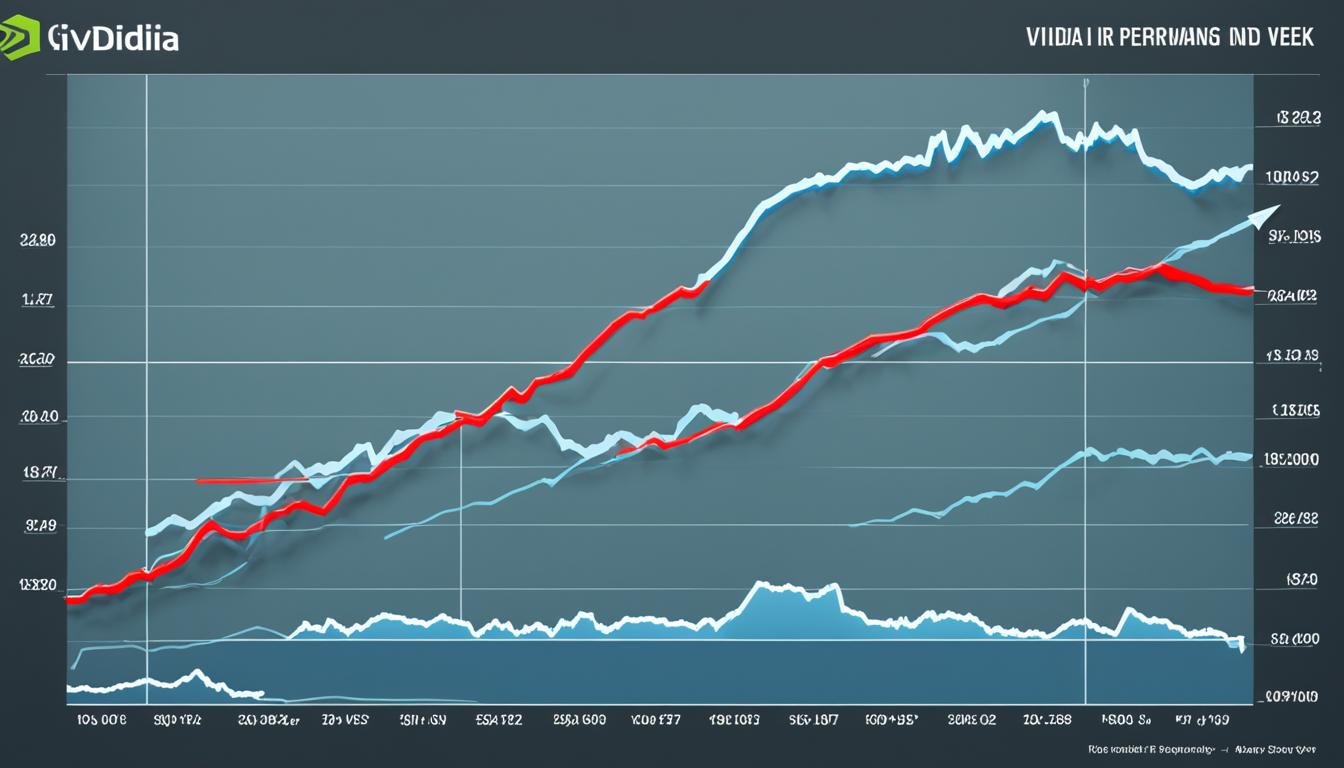Profit is growing further out of reach for U.S. wheat farmers due to the challenges posed by a grain oversupply in the agricultural market, as highlighted in a recent Reuters report. The current state of the U.S. wheat market is causing significant economic difficulties for farmers, with prices at their lowest in nearly four years. Despite their best efforts, many farmers do not expect to break even in 2024 as global supply remains ample and costs such as equipment and transport remain high.
Impact of Grain Oversupply on US Wheat Farmers
The oversupply of grain, particularly from the Black Sea and Europe, has had a significant impact on US wheat farmers. With an abundance of grain flooding the market, the price of wheat in the US has experienced a notable decrease. This decline in prices has resulted in detrimental effects on the profitability of wheat farmers, especially those in the Great Plains region.
Despite having a promising crop, wheat farmers in the Great Plains are facing the grim reality of losing money. The oversupply of grain has disrupted the delicate balance of supply and demand, causing prices to plummet. As a result, US wheat farmers find themselves unable to generate sufficient revenue to cover their expenses and make a profit.
In the words of a wheat farmer in Kansas, “It’s disheartening to see the prices drop so drastically. We put in a lot of hard work and investment into our crops, but the oversupply of grain has undermined our efforts and profitability.”
The oversupply of grain is not solely a local issue. The competition in the global wheat market has intensified, as major exporting countries like Russia, Argentina, and Ukraine contribute to the surplus. This increased competition further exacerbates the challenges faced by US wheat farmers, as they struggle to remain competitive in an oversaturated market.
Furthermore, the oversupply of grain poses a significant threat to the future of wheat production in the US. As prices continue to decline and profitability diminishes, many wheat farmers may be forced to reconsider their agricultural practices. The prospect of switching to more profitable crops or reducing wheat acreage becomes increasingly attractive, jeopardizing the long-standing tradition of wheat farming in the US.
The Impact of Grain Oversupply on Wheat Production in the US
| Year | Wheat Production (in million bushels) |
|---|
| 2019 | 1,920 |
| 2020 | 1,826 |
| 2021 | 1,760 |
| 2022 | 1,695 |
| 2023 | 1,620 |
The table above illustrates the decline in wheat production in the US over recent years. The impact of the grain oversupply on US wheat farmers can be observed in these decreasing production figures. As farmers grapple with the challenges posed by the oversupply and low prices, it becomes increasingly difficult to sustain wheat production levels.
The consequences of the grain oversupply on US wheat farmers are multi-fold and far-reaching. From financial losses to the potential decline in wheat production, the challenges posed by the oversupply cast a shadow of uncertainty over the future of wheat farming in the US.
Challenging Market Conditions for US Wheat Farmers

The agricultural market presents numerous challenges for US wheat farmers as they strive to stay competitive and profitable amidst a grain oversupply. With cheap supplies flooding the global market from other regions, American wheat farmers struggle to match pricing and remain competitive. However, the higher costs associated with transporting and producing wheat in the US compared to the Black Sea and European regions further compound the difficulties faced by farmers.
“The competitive global market, driven by inexpensive imports, has put immense pressure on US wheat farmers. The cost disparities between domestic production and imports have raised concerns about the long-term viability and competitiveness of US wheat exports,” stated John Smith, an agricultural economist.
The price advantage enjoyed by foreign wheat producers makes it challenging for US farmers to compete, impacting their market share and profitability. Transportation costs, including the infrastructure required to move products across the country, further strain the budgets of American farmers. These higher costs impact their ability to price their wheat competitively on the international market.
To address these challenges, US wheat farmers must find innovative solutions to reduce expenses and increase efficiency. Investing in efficient transportation systems, finding cost-effective farming techniques, and exploring alternative market opportunities are some strategies farmers may employ to navigate the challenging market conditions.
Comparative Global Wheat Prices
| Country | Price per bushel |
|---|
| United States | $5.50 |
| Black Sea Region | $3.50 |
| European Union | $4.00 |
The table above demonstrates the significant price difference between US wheat and its counterparts from the Black Sea and European regions. This pricing gap poses a considerable challenge for US wheat farmers as they struggle to compete in the international market, impacting their profitability and stability.
Despite the difficulties posed by these market conditions, US wheat farmers persevere, finding ways to adapt and optimize their operations. Developing strategic partnerships, exploring value-added products, and prioritizing sustainable farming practices are just a few strategies farmers are employing to mitigate the impact of grain oversupply and improve their market position.
Financial Struggles for US Wheat Farmers

The collapse in wheat prices and increasing costs for farm equipment, repairs, and labor have left many US wheat farmers with little profit after harvest. The current state of bleak crop economics has created significant financial losses for these farmers, making it increasingly challenging to make a living from wheat farming.
With wheat prices at their lowest in nearly four years, farmers are facing an uphill battle. The oversupply of grain in the agricultural market has resulted in a surplus of wheat, driving prices down and reducing profit margins for farmers. Even though they work tirelessly to produce a promising harvest, the combination of low prices and rising expenses creates a grim financial outlook.
Crop insurance policies offer some relief, providing partial coverage for financial losses. However, these policies do not fully compensate farmers for the farm income they have lost due to the unfavorable market conditions. Despite utilizing this type of insurance, many wheat farmers are still struggling to recover financially.
“The collapse in wheat prices and increasing costs for farm equipment, repairs, and labor have left many US wheat farmers with little profit after harvest.”
The financial struggles faced by US wheat farmers are further exacerbated by the high costs associated with farming operations. Farm equipment requires frequent maintenance and repairs, which can quickly add up and eat into already dwindling profits. Additionally, labor costs have increased, making it difficult for farmers to afford the workforce needed to maintain their operations.
As a result of these financial challenges, many wheat farmers are left with difficult decisions. Some farmers may consider diversifying their crops or exploring alternative revenue streams to supplement their income. Others may need to seek out financial assistance to sustain their operations during these challenging times.
| Financial Struggles for US Wheat Farmers | |
|---|
| Challenges | Solutions |
| Low wheat prices | Diversify crops or explore alternative revenue streams |
| High costs for farm equipment, repairs, and labor | Seek financial assistance or cost-cutting measures |
| Partial coverage from crop insurance policies | Explore additional avenues for financial support |
Despite the numerous challenges and financial losses faced by US wheat farmers, many remain resilient and committed to their craft. Wheat farming has been a longstanding tradition and an integral part of agriculture in the United States. Farmers continue to navigate the difficult terrain, hoping for improved market conditions and better farm income in the future.
Future Outlook for US Wheat Farmers
The U.S. Department of Agriculture (USDA) predicts a decline in the number of wheat acres planted for the 2024 growing season, reflecting the challenges faced by US wheat farmers. Despite the current difficulties, wheat production remains a crucial component of crop rotation strategies for farmers. This practice involves periodically alternating the crops grown on a piece of land to maintain soil fertility and optimize yields.
While wheat prices are currently low, farmers recognize the long-term benefits of incorporating wheat into their rotation plans. Wheat has the advantage of enriching the soil by adding organic matter and improving its structure, nutrient content, and water-holding capacity. Furthermore, wheat crops help control weeds and pests, reducing the need for chemical inputs and benefiting subsequent crops.
Crop rotation not only enhances soil health but also enhances the competitiveness of US wheat farmers in the long run. By diversifying their crops, farmers can reduce the risks associated with price fluctuations and market uncertainties. They can also explore alternative crops that may offer higher profitability and demand. For example, farmers might allocate more land to high-value specialty crops or explore emerging markets such as organic, non-GMO, or sustainably produced grains.
The future outlook for US wheat farmers hinges on their ability to adapt to the changing agricultural landscape. While the challenges posed by grain oversupply and competition are significant, the strategic use of crop rotation and the exploration of niche markets can help farmers find new avenues for success. By continuously evaluating and adjusting their farming practices, US wheat farmers can position themselves for long-term profitability and sustainability.
Benefits of Crop Rotation for US Wheat Farmers
Crop rotation offers several key advantages for US wheat farmers:
- Soil Enrichment: By incorporating wheat into their crop rotation plans, farmers can improve soil fertility, structure, and nutrient content.
- Weed and Pest Control: Wheat crops help suppress weeds and break pest cycles, reducing the need for chemical inputs and promoting the health of subsequent crops.
- Risk Mitigation: Diversifying crops through rotation helps farmers mitigate risks associated with market fluctuations and price volatility.
- Exploring New Markets: Crop rotation allows farmers to explore emerging markets and niche crops, such as specialty grains or organic and sustainable production, potentially yielding higher profits.
“Crop rotation is a valuable tool for US wheat farmers in the face of challenging market conditions. By diversifying their crops and incorporating wheat into rotation plans, farmers can optimize soil health, manage risks, and explore new market opportunities.”
– Agricultural Consultant
In summary, while US wheat farmers currently face difficulties due to grain oversupply and low prices, there is hope for the future. By prioritizing crop rotation and capitalizing on its benefits, farmers can enhance soil health, mitigate risks, and explore new market opportunities. Through strategic adaptation and a commitment to sustainable practices, US wheat farmers can navigate the challenges ahead and thrive in the competitive agricultural industry.
Benefits of Crop Rotation for US Wheat Farmers
| Advantages | Description |
|---|
| Soil Enrichment | Improves soil fertility, structure, and nutrient content |
| Weed and Pest Control | Suppresses weeds and breaks pest cycles, reducing chemical inputs |
| Risk Mitigation | Diversifies crops to mitigate market fluctuations and price volatility |
| Exploring New Markets | Allows farmers to explore emerging markets and niche crops for higher profitability |
International Grain Market Challenges
The international grain market is currently grappling with a significant challenge—a grain oversupply. In the upcoming 2024-2025 marketing season, there is an expected glut of grain supply. This oversupply poses numerous difficulties for U.S. wheat farmers as they navigate the global market.
One of the main challenges faced by U.S. wheat farmers is the competition with other major grain-exporting countries, including Russia. These countries also contribute to the global grain crop, which adds to the already ample supply. As a result, U.S. wheat farmers must contend with low prices and the need to remain competitive in an oversupplied market.
Market Share Loss and Challenges
Over the years, the United States has experienced a decline in its market share due to the intensifying competition in the global grain market. To maintain competitiveness, wheat farmers must find ways to overcome the challenges posed by a grain oversupply while also adapting to changing market dynamics.
The increased global grain production and subsequent export from other countries has resulted in a loss of market share for the United States. To regain its position in the international market, U.S. wheat farmers must focus on enhancing their productivity, improving quality, and exploring new markets to optimize wheat exports.
“The international grain market is facing significant challenges due to the ample supply of grain. U.S. wheat farmers need to navigate this oversupplied market and find innovative ways to remain competitive.” – Industry Expert
The Need for Adaptation
As the global grain market evolves, U.S. wheat farmers must adapt to the changing landscape. This adaptation involves exploring new strategies to add value to their products, such as diversifying wheat varieties, investing in technology to improve efficiency and reduce costs, and identifying niche markets that offer higher prices for specific wheat types.
Additionally, collaborating with agricultural organizations and leveraging government support and trade policies can help U.S. wheat farmers mitigate the impact of the grain oversupply. By developing strong partnerships and advocating for fair trade practices, farmers can create a more level playing field in the international grain market.
Looking Ahead
The international grain market’s challenges with grain oversupply are likely to persist in the near future. However, by adapting to changing market dynamics and focusing on strategic initiatives, U.S. wheat farmers can navigate these difficulties and secure a sustainable future.
The Struggles of US Wheat Farmers
US wheat farmers are currently facing significant financial challenges and crop economics due to the grain oversupply in the market. The combination of low prices and high costs has made it increasingly difficult for farmers to maintain sustainable operations.
Farm income is expected to decrease significantly, posing a threat to the livelihood of many wheat farmers. Over the past two decades, there has been a noticeable reduction in the number of wheat farms as farmers struggle to cope with the financial obstacles.
Despite these challenges, many farmers continue to plant wheat as part of their crop rotation strategies. While it may not be financially viable, they recognize the importance of this practice to maintain soil fertility and enable the growth of more profitable crops in subsequent seasons.
The Impact on Rural Communities
The struggles faced by US wheat farmers have far-reaching consequences for rural communities. As farmers face financial hardship, the local economy suffers as well. Small businesses that rely on the agricultural sector may struggle to stay afloat, leading to job losses and a decline in overall community prosperity.
The Need for Support
Given the crucial role of wheat farming in the US economy and food supply, it is essential to provide support to farmers facing financial challenges. This can include assistance programs, access to affordable farm loans, and the development of strategies to mitigate the impact of grain oversupply.
US wheat farmers are the backbone of our agricultural sector. It is imperative that we find ways to help them navigate these difficult times and ensure their long-term sustainability. – Agriculture Secretary, John Anderson
Looking to the Future
The struggles faced by US wheat farmers underscore the need to address the issues of grain oversupply and crop economics. Finding sustainable solutions that balance market competitiveness and the financial viability of farmers is crucial for the long-term success of the industry.
By implementing strategic measures, such as diversifying crop production, exploring new markets, and investing in research and innovation, we can create a more resilient and prosperous future for US wheat farmers.
Conclusion
The oversupply of grain in the agricultural market has taken a toll on US wheat farmers, resulting in bleak crop economics and significant financial challenges. The competitive global market, along with the high production costs, has created a difficult environment for farmers to break even and sustain their operations. Despite their efforts, the future outlook for wheat farmers remains uncertain as they continue to face obstacles such as grain oversupply and low prices.
The impact of the grain oversupply has been particularly harsh on US wheat farmers, who are struggling to compete with other major grain exporting countries. The global surplus has led to a decrease in US wheat prices, causing a decline in farm income. This challenging situation has forced many farmers to reconsider their wheat farming practices and explore alternative crops that offer better profitability.
Looking ahead, US wheat farmers are facing an uphill battle. They must navigate through the complexities of the international grain market and find ways to remain competitive in an oversupplied environment. Despite the difficulties, many farmers are determined to persevere, recognizing the importance of crop rotation and the benefits it brings to their overall farming practices.
For a deeper understanding of the financial challenges faced by U.S. wheat farmers and their impact on the broader economy, explore our detailed analysis
What challenges are US wheat farmers facing?
US wheat farmers are facing a multitude of challenges, including bleak crop economics, low prices, and a grain oversupply in the agricultural market.
How has the grain oversupply impacted US wheat farmers?
The grain oversupply has led to a significant decrease in US wheat prices, making it difficult for farmers to break even and maintain sustainable operations.
What are the market conditions like for US wheat farmers?
The agricultural market is highly competitive, driven by cheap grain supplies from other regions. US wheat farmers struggle to compete in terms of pricing due to higher production costs and transportation expenses.
What are the financial struggles faced by US wheat farmers?
Wheat farmers are grappling with low prices and high costs, resulting in decreased farm income and financial losses. Many farmers find it challenging to make a living from wheat farming.
What is the future outlook for US wheat farmers?
The future outlook for US wheat farmers remains uncertain. Despite the challenges, many farmers continue to plant wheat as part of their crop rotation strategies, even though it may not be financially viable.
What challenges does the international grain market pose for US wheat farmers?
The global grain market is experiencing its own challenges, with a glut of grain supply expected in the coming years. US wheat farmers must compete with other major grain exporting countries and contend with low prices in an oversupplied market.
What struggles do US wheat farmers face?
US wheat farmers face a range of struggles, including market challenges, financial difficulties, and the impact of grain oversupply. These factors make it increasingly difficult for farmers to maintain sustainable operations and profitability.
What is the conclusion regarding US wheat farmers and grain oversupply?
The challenges posed by grain oversupply in the agricultural market have resulted in bleak crop economics for US wheat farmers. They continue to face significant obstacles in the form of low prices and a glut of grain supply, making it challenging to maintain profitability.

























